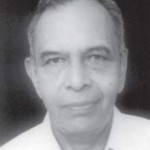Born in September 1921 in Phalpu in Western Nepal, Bhanubhagta Gurung joined the Indian Army in 1939 and was posted to 3rd Battalion 2nd Gorkha Rifles (3/2 GR, known as the Seymur Rifles). The Japanese Army captured Rangoon in March 1942 and the British decided to evacuate their forces from Burma. They managed to reach Imphal in Manipur by May 1942. An offensive operation by the British into Arakan was unsuccessful. Not equipped with adequate resources to carry out a major attack, they opted for deep penetration by Special Forces under Brigadier (later Major General) Wingate. 3/2 GR was part of this brigade. About 3000 men entered Burma in March 1943 to disrupt the lines of communications of the Japanese Army. Bhanubhagta was in column Number 4 and was promoted Lance Naik [L/Nk]. The unit ambushed by the Japanese, suffered heavy casualties. The force returned to India and all the units including 3/2 GR were brought up to full strength, trained and were ready for offensive operations in Burma. His unit was now part of 25 Indian Division and he was promoted to Naik.
The 14th Army had launched an offensive towards Mandalay in Central Burma and 25 Division was ordered to carry out a diversionary attack along the coastal sector in Arakan. 25 Division cleared the Myeben Peninsula, thus denying the use of waterways along the Arakan to the Japanese. 3/2 GR landed at Ru-Ywa. Bhanubhagta was demoted for going to a wrong hilltop and sent to another company. It was later found he was wrongly punished. He showed exemplary camaraderie by carrying a wounded soldier on his back three miles in jungle terrain and getting him treated. ‘A’ Company took up positions on the two hills on the dominating feature 582 by 4 March 1944.
The two hills were nicknamed Snowdon and Snowdon East. There was no enemy on the feature. The Japanese attacked Snowdon East during the night killing half the Gorkhas while the remaining soldiers, out of ammunition, made their way to B Company on Snowdon. B Company in which Bhanubhagta was serving was ordered to re-take Snowdon East regardless of costs.
Bhanubhagta’s section was pinned down following heavy fire. A sniper was inflicting casualties on the section. Bhanubhagta shot down the sniper thus saving the section from more casualties. He led his section to a spot twenty yards short of the objective crest when the section was held up again by fierce enemy fire. Bhanubhagta charged to the top and lobbed two grenades killing two. He rushed on to clear the next trench with a bayonet charge. In a savage hand-to-hand fighting, Bhanubhagta cleared two more foxholes single-handed. For a fifth and last time, he rushed alone to tackle an enemy bunker, lobbing his last two smoke grenades. The feature had been cleared but the Japanese were collecting for a counter-attack. He installed a Gorkha with a machine gun to repel the counter-attack with two other riflemen. He was awarded Victoria Cross [VC] and the unit was authorised the Battle Honour Tamandu where the battle took place.
His company commander persuaded him to continue in service but he opted for retirement in January 1946 to look after his frail widowed mother and his young wife. He was given the rank of Honorary Havaldar. His three sons served in 2 GR. He suffered from asthma and spent the last four years of his life with his youngest son in Gorkha village where he passed away on 1 March 2008. He was cremated at the holy site of Devghat at Chitwan. The funeral was attended by family members, friends and representative from 2 GR. A piper played the last post as his body lay draped in a flag of 2 GR. He was awarded Star of Nepal, 3rd class and in 2000, the Gorkha training block at Catterick, UK was named after him.


 [/column]
[/column]